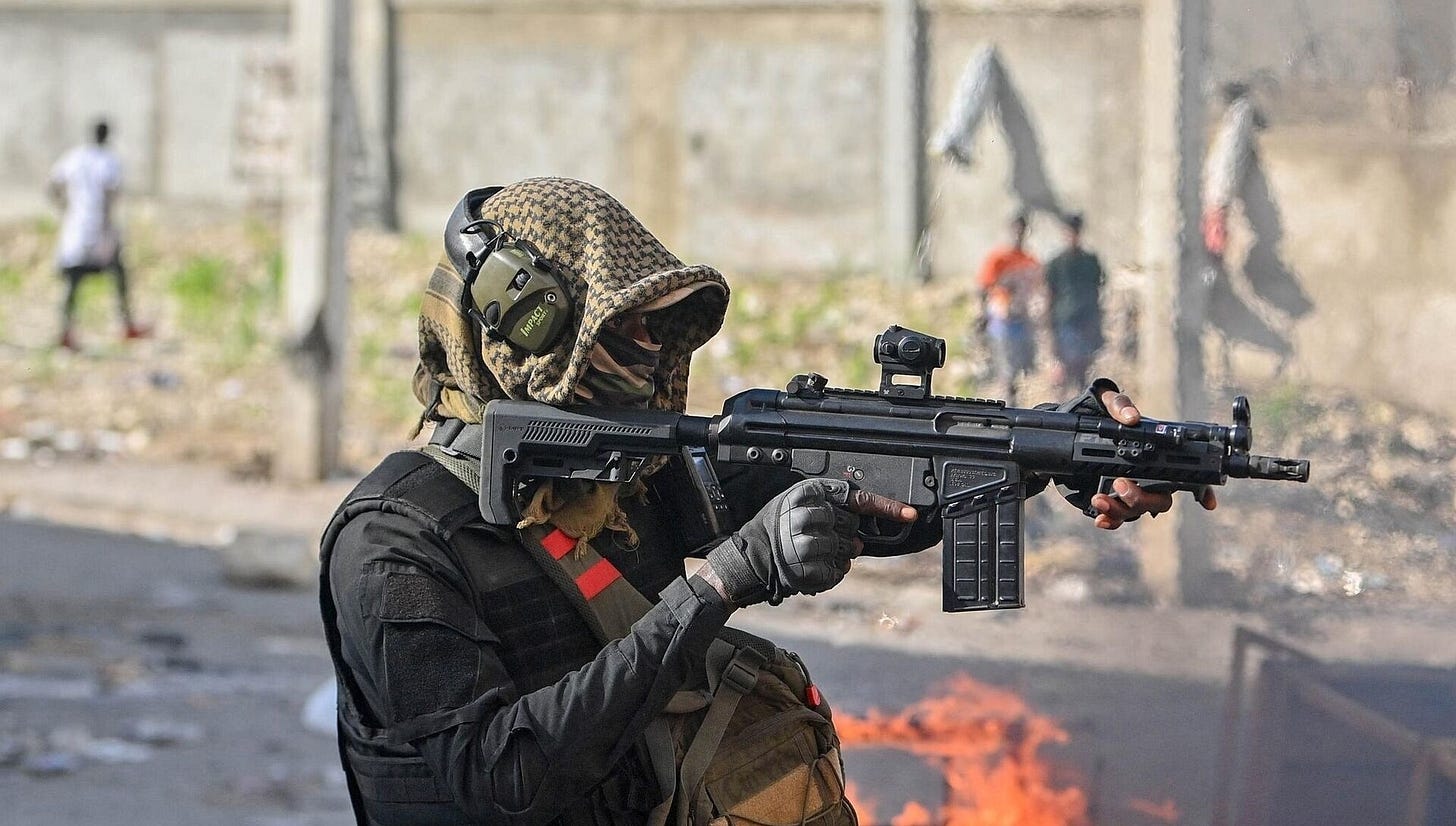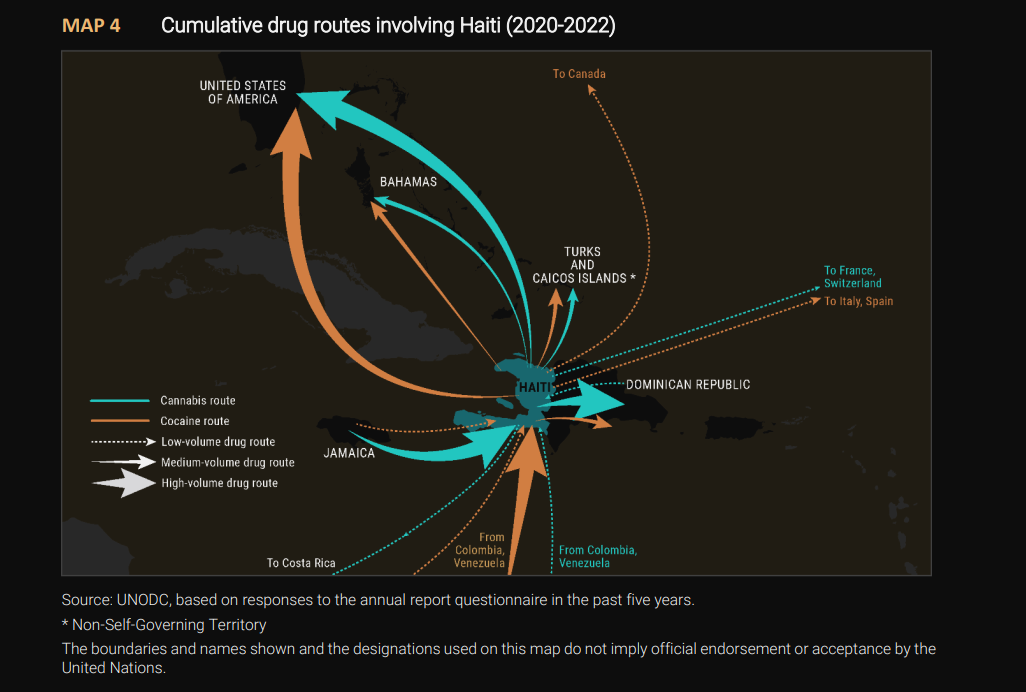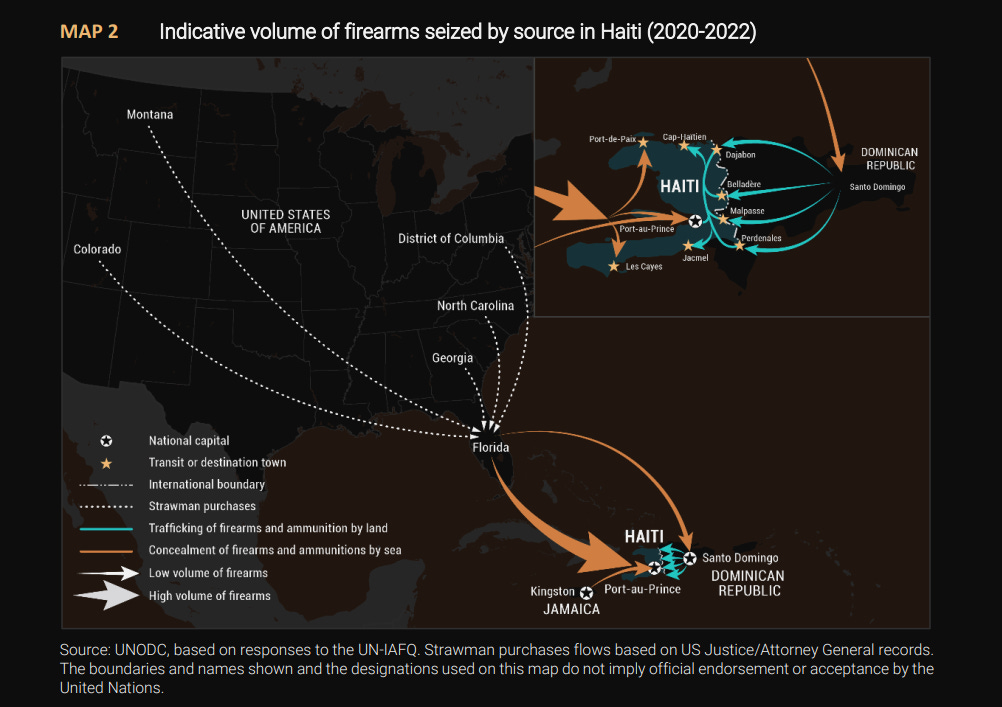Haiti's Cartel & American Fueled Warlords
Are you watching closely?
For the past 7 years, Haiti has been in an endless battle against various groups people refer to as gangs. I believe this is a huge mistake. Referring to these groups as gangs is doing a huge disservice to Haiti. This misframing of the situation has the whole world believing that Haiti is dealing with a police issue. They’re not dealing with gangs like the LAPD deals with in Los Angeles. What they’re facing is more akin to African warlords and Boko Haram than the Bloods and Crips. These warlords terrorize towns and burn residents alive in their own homes. On the surface, these militants don’t seem to have grand political motivations; they seem to just torture random citizens for fun. Nothing seems logical about them—until you look deeper.
Snow in the Summer
Drug trafficking has been a huge contributor to corruption and instability in Haiti since the 1980s. You might say: Haitians are too poor to have a huge consumer market for drugs, and frankly, it’s not in their culture. So what drug trafficking are you referring to? Haiti has always been a main route for South American cartels to get drugs into the United States. You probably haven’t heard about it because Netflix hasn’t made a Narcos series about it yet.
Due to Haiti’s historically weak institutions, underfunded coast guard, and undermanned police, it’s always been a target for big-time drug traffickers. Drugs would enter Haiti by sea or by plane and from there make the journey to places like Miami and Puerto Rico. Corrupt actors in Haiti’s government would often get involved in the trade to fill their pockets. Back in 1991, a former member of Pablo Escobar’s Medellin Cartel, Gabriel Taboada, testified in the U.S. in front of Congress about Haiti’s involvement in the drug trade. Here’s a quote from a New York Times article on the matter:
“Speaking through an interpreter, Mr. Taboada said he had met with senior members of the Haitian military, including Colonel Francois, in the offices of the Medellin cocaine cartel in the Colombian town of the same name in 1984. He said the Haitian officers helped insure that roughly 70,000 pounds of cocaine were delivered from Colombia through Haiti to the United States in 1987.
"The cartel used Haiti as a bridge so as to later move the drugs toward the United States," Mr. Taboada said. "They took planes out of Colombia and landed in Haiti, protected by the Haitian military. Michel Francois protected the drugs in Haiti and then allowed the drugs to continue to the United States.”
In a poor country like Haiti, the international drug business can be an insanely destabilizing force. No other profession in Haiti can bring you the kind of income you can make from being a cartel middleman.
Fast forward to today: In August 2024, the U.S. government sanctioned former Haitian president Michel Martelly. The U.S. Treasury stated in a press release: “Today’s action against Martelly emphasizes the significant and destabilizing role he and other corrupt political elites have played in perpetuating the ongoing crisis in Haiti.” This was surprising to some because Martelly was a U.S.-backed president. It’s even documented that the U.S. meddled in Haitian elections in his favor, and during his presidency, he had former U.S. president Bill Clinton as an advisor. The former Haitian president is accused of drug trafficking, money laundering, and funding some of the militant groups that are ravaging Haiti today.
“The existence of widespread gang activity and human rights abuses in Haiti creates a permissive environment for drug trafficking activities, and the country is a transit point for illicit drugs entering the United States. Many of Haiti’s political and business elites have long been involved in drug trafficking and have been linked to the gangs responsible for the violence that has destabilized Haiti.”
US Treasury
On March 3rd, 2025, Colombia's President Gustavo Petro stated that cocaine trafficked by armed groups and mafias in Catatumbo, on the border with Venezuela, is financing the violence in Haiti. He also stated that drugs produced in this area "go in a direct line to the upper Guajira and in a few hours arrive in Haiti, finance the Haitian violence, and from there, continue their route to Miami.”
Drugs are known to mostly come through low-security ports, beaches, and wharves on the southern coast of Haiti. The Haitian warlords also receive arms shipments from various countries, but mostly the United States. This includes .50 caliber sniper rifles, .308 rifles, and even belt-fed machine guns.
Map Source:
The Lunatics Took Over The Asylum
During the presidency of Jovenel Moise, the “gangs” were used by him and other powerful Haitians to stomp out anti-government protests and further their personal business interests. After Moise was assassinated, Haiti took a turn for the worse. The gangs realized they had the money and firearms and didn’t have to take orders from politicians anymore. As the gangs grew more powerful, Haiti’s elites lost control of them. There are at least 15 “gangs” in Haiti, with some of them combining their forces and fighting under one umbrella. They include Viv Ansanm led by the infamous Barbecue, Gan Grif, Base 5 Secondes, Titanyen, Canaan, and Baz Galil. These gangs are currently being fueled by the drug trade and arms from citizens of the United States. These gangs use violence for entertainment and immediate monetary gain such as extortion and kidnaping. But one of their their main goals is to keep Haiti weak and attention away from the highly lucrative drug trade.
The future of Haiti is bleak. The Haitian police and the roughly 1,000 Kenyan policemen assisting them don’t seem to have the numbers or equipment to make a huge difference. For anything to change, Haiti and the international community are going to have to start looking at this as a military problem, not a police problem. Nowhere in Haiti is safe; the citizens live in perpetual terror. The police and Kenyans have not established any sort of fortified perimeter in the capital where citizens can feel safe. They seem to be interested only in conducting limited operations with varying levels of success and acting mostly as a reactive force. This conflict is not going to end anytime soon if something major doesn’t change.





That’s fascinating. Do we have an idea of how much of all of the drugs entering the US is coming from Haiti?